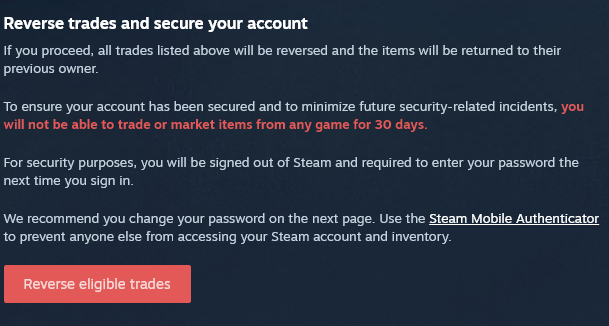Bedding Insights
Exploring the latest trends and tips in bedding and sleep comfort.
Trade Reversal Timeline CS2: When Every Second Counts
Discover the secrets of Trade Reversal Timing in CS2! Unlock strategies that turn the tide when every second counts. Don't miss out!
Understanding Trade Reversal Timelines in CS2: A Comprehensive Guide
Understanding Trade Reversal Timelines in CS2 is crucial for players looking to maximize their gaming experience and strategy. In competitive play, the timing of a trade reversal can significantly influence the outcome of encounters. Players must be aware not only of the mechanics involved but also of the various factors that contribute to the success of a trade reversal. Key elements include positioning, player reflexes, and the current state of the game. It's important to practice these skills in different scenarios to develop an intuition for when to reverse a trade effectively.
To master the concept of Trade Reversal Timelines, it's beneficial to study specific examples and break them down into actionable steps. Consider using a flowchart or a decision tree to visualize the timing and possible outcomes of reversals. For instance, when engaging in a trade, ask yourself the following questions:
- What is my opponent's positioning?
- How much damage have I dealt versus how much have I taken?
- Am I in a position to escape or reposition?

Counter-Strike is a popular series of multiplayer first-person shooter games that emphasizes teamwork and strategy. Players can compete in various modes, with the objective often revolving around completing specific missions, such as planting or defusing a bomb. If you're looking to enhance your in-game experience, you might want to learn how to reverse trade cs2, which can provide insight into how to effectively manage your in-game items and trades.
Key Factors Influencing Trade Reversal Timing in CS2
In the fast-paced environment of Counter-Strike 2 (CS2), understanding the key factors influencing trade reversal timing can significantly enhance a player's performance. One of the most critical elements is the game economy, which dictates when players decide to engage in trades. The accumulation of resources and the state of the team's equipment can push a player to risk a trade at the right moment, maximizing their chance of success. A team with a strong economic footing is more likely to engage aggressively, whereas a team that is struggling may adopt a more defensive posture, impacting the timing of any trade reversals.
Another vital factor is the positioning of players during a match. Effective communication and teamwork allow players to coordinate their movements and set up successful trades. Additionally, the map control achieved by a team can drastically influence trade reversal timing. When a team has dominant control over key areas, they can afford to take risks in trades, while losing control can force players to play more conservatively. Mastering these aspects not only aids in timing trade reversals but also establishes a foundation for overall team strategy in CS2.
How to Effectively Manage Trade Reversals in High-Stakes Situations
Managing trade reversals in high-stakes situations requires a strategic approach to mitigate potential losses and capitalize on market fluctuations. First and foremost, it's essential to analyze market trends and identify the key indicators that signal a potential reversal. Utilize technical analysis tools, such as moving averages and support/resistance levels, to pinpoint the optimal entry and exit points. Additionally, it's wise to maintain a well-diversified portfolio to spread risk, allowing you to cushion the impact of unforeseen reversals.
Furthermore, effective risk management is paramount when navigating trade reversals. Establishing strict stop-loss orders can help you minimize losses and exit a trade before it becomes detrimental. It's also advisable to continually reassess your strategies and stay informed about market news that may trigger sudden reversals. By setting clear trading goals and regularly reviewing your performance, you can develop a resilient approach to managing trade reversals, ensuring you're prepared for high-stakes situations that can significantly affect your financial outcomes.